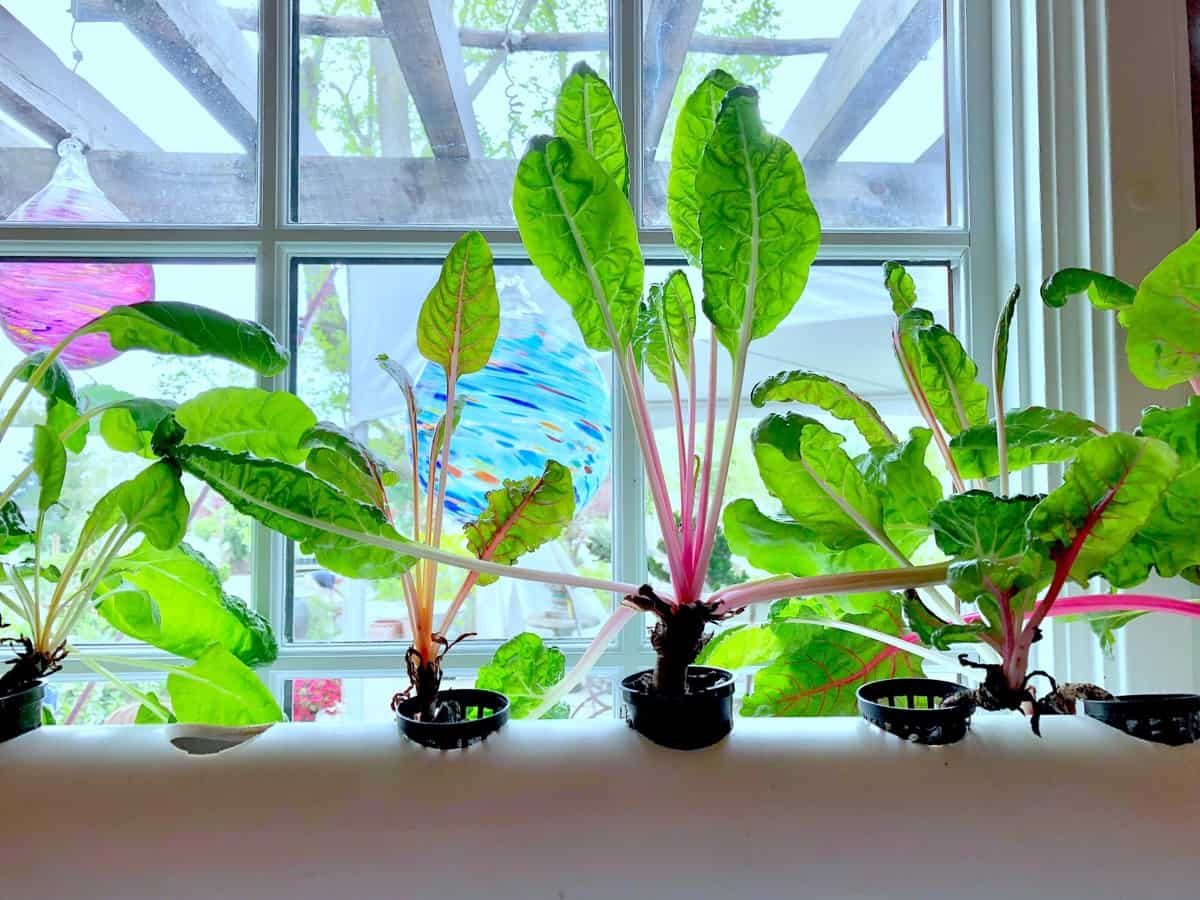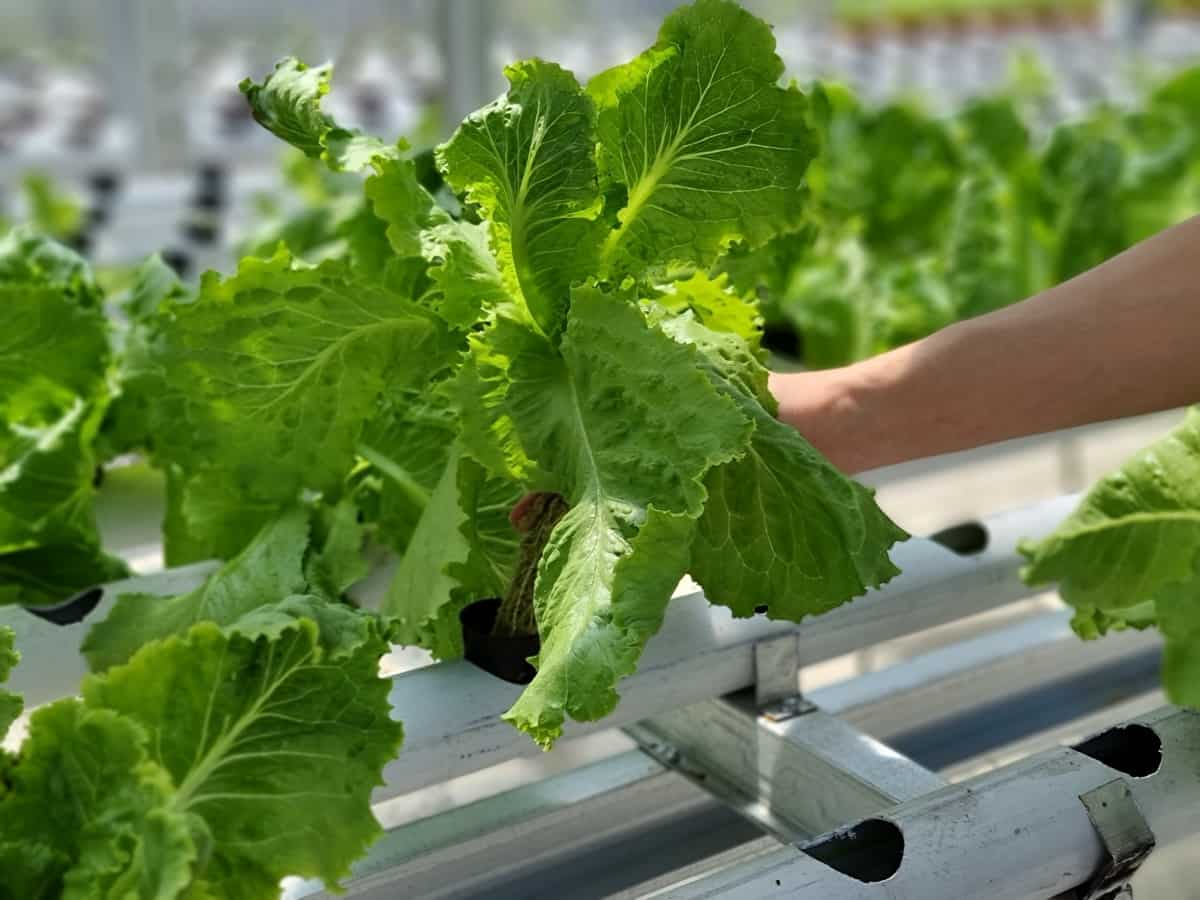The hydroponic farming method is one of the most modern methods of farming. In hydroponics, plants are grown using water-based nutrient solutions rather than soil. The medium can include vermiculite, coconut coir, or perlite. Hydroponic production systems are widespread among small farmers, hobbyists, and commercial enterprises. Most people start their cultivation at home with hydroponic equipment. You can grow food at home with hydroponics kits of all sizes.

Fresh and healthy plants are produced using an enriched nutrient-filled solution. A simple hydroponics system can be easily integrated on any apartment balcony to help the urban crowd rekindle their passion for farming by enabling them to use the hi-tech hydroponics system for a simple small-scale farming method. Hydroponics does not require a huge controlled environment to work effectively. You can grow as many vegetables as you like using appropriate hydroponic equipment.
How to Start Balcony Hydroponic Farming
Plants that Can be Grown with Hydroponic System in Balcony
- Vegetables: Tomato, Cucumber, Brinjal, Lady finger/Okra, Chillies, Cauliflower, Bitter gourd, etc
- Leafy Vegetables / Greens: Kale, Amaranthus, Broccoli, Romaine lettuce, Ice burg lettuce, Spinach, Butterhead lettuce, Purslane, Kulfa.
- Herbs: Rosemary, Thyme, Basil, Coriander, Mint, etc.
A Simple Guide to Setting Up the Hydroponic System on Your Balcony.
Choose the Kind of Unit You Would Like to Go With
You can choose from hundreds of variations of hydroponic systems when you want to grow plants hydroponically. Hydroponic systems are classified into six types, under which all variations fall. Each type of hydroponic system works differently, so you should consider the pros and cons of each type of system.
- Wick System
- Water Culture
- Ebb and Flow
- Drip
- NFT (Nutrient Film Technology)
- Aeroponic systems
You can build your DIY hydroponic system in a variety of ways. Materials such as recyclable plastic bottles, containers, boxes, and even PVC pipes can be used to build one. You must know the features of each hydroponic system and identify your hydroponic needs before deciding which is right for you. Consider wick or water culture systems if you’re a home grower looking for a simplistic system that requires little setup. You may want to consider a drip system or NFT system if you wish to grow a wide variety of plants or a large number of them.
Decide the Growth Medium to be Used
The growing medium is one of the most important aspects of hydroponics. Plants grow in hydroponics, where the growing medium supports their roots and provides them with nutrients. There are various materials you can use to make it. Rockwool, perlite, vermiculite, sponge, oasis cubes, rice hulls, and coco coir are some of the most common growing mediums.
Soilless mixes made from recycled materials such as peat moss, perlite, and vermiculite are the most popular growing media for hydroponics. The lightweight and well-aerated nature of soilless mixes makes them ideal for hydroponics. Coco coir, made from coconut husks, is another option. Growing mediums such as coco coir are becoming increasingly popular with hydroponic gardeners. The aerated and water-retentive properties of coco coir make it ideal for hydroponics.
In case you missed it: How to Start Vertical Hydroponic Farming at Home: Step-By-Step Guide for Beginners

Plant Your Seeds/Seedlings in Soil Plugs
If you are not growing seeds directly, placing them in dehydrated soil plugs before placing them in water is necessary. A complete set of accessories, including soil plugs and mineral solutions, is usually included with the setup. You can purchase these online if they are not provided and will only have to pay around Rs 150-200.
Make Your Nutrient Solution
A good nutrient mix includes primary nutrients such as nitrogen, potassium, and magnesium; secondary nutrients such as calcium, sulfur, and phosphorus; and micronutrients such as iron, copper, manganese, zinc, molybdenum, and boron. In 20 liters of water, mix the solution as follows.
- 8.3 ml of potassium nitrate
- 25 ml of calcium nitrate
- 1.7 ml of potassium sulfate
- 17.5 ml of magnesium sulfate
- 6.25 ml of monopotassium phosphate
- 2 ml of trace elements
A food-grade container should store the solution away from light at room temperature. It should be shaken well before use. Add 1% of the nutrient solution to the water to these slots after setting up the hydroponics garden. This nutrient solution, filled with ions and salts, promotes plant growth.
Three Most Essential Tips for Keeping Your Plants Healthy and Thriving
- Maintain a regular watering schedule for your plants. A hydroponic system uses a growing medium that absorbs water. As a result, your plants will need to be watered more frequently than if grown in soil.
- Keep your plants fertilized regularly. Plants in hydroponic systems do not receive nutrients from the growing medium. Because of this, you will have to fertilize them more often than if they were grown in soil.
- Maintain a constant pH level in your growing medium. The growing medium can affect the pH of the water in your hydroponic system. It is, therefore, necessary to test your growing medium’s pH and adjust it accordingly.
Care and Instructions for Starting a Hydroponic Balcony
- Crop selection is important in balcony farming, regardless of whether the balcony is open or secluded.
- Choosing vegetables and herbs that do not require much attention or resources is important. Among the best options are capsicums and leafy vegetables like spinach, kale, and lettuce.
- During the day, ensure the plants receive sufficient sunlight or artificial light.
- Make sure that the plants have enough space to grow and flourish
- To ensure sturdy plant growth, you should get some support if you plan to have wine plants.
- The type of hydroponics system you choose depends on the balcony, crops, and lighting.
- Water levels must be checked regularly and replenished as soon as they drop.
- Ensure your plants have enough space between planting pods to grow and expand.
- Check your reservoir’s water level and ensure you can easily refill it.
- Without soil to anchor plants, taller, heavier plants (and those that climb) will probably need additional support. Although the clay pebbles are sturdy, they are not as strong as if rooted in the ground.
In case you missed it: How to Start a Hydroponic Retail Store: A Profitable Agriculture Business Idea

Conclusion
All you need for a hydroponic garden is a system, water, light, seeds, and nutrients. The plants will grow faster than in traditional gardens, without the bugs or dirt. Hydroponics can also be perfected with practice, like any gardening requires a certain amount of practice. Urban gardeners with limited resources would especially benefit from it.
- Feed Your Flock for Less: Top 10 Tips to Save on Chicken Feed
- Ultimate Guide to Ossabaw Island Hog: Breeding, Raising, Diet, and Care
- Hatching Answers: The Top 10 Reasons Your Chickens Aren’t Laying Eggs
- Eggs and Economics: Breaking Down the Cost of Raising Backyard Chickens
- Defend Your Greens: Proven Methods to Keep Iguanas Out of Your Garden
- Ultimate Guide to Cinnamon Queen Chicken: A Comprehensive Guide for Beginners
- Ultimate Guide to California Tan Chicken: Breeding, Raising, Diet, Egg-Production and Care
- Ultimate Guide to Marsh Daisy Chicken: Breeding, Raising, Diet, and Care
- 10 Types of Chicken Farming Businesses You Can Start for Profits